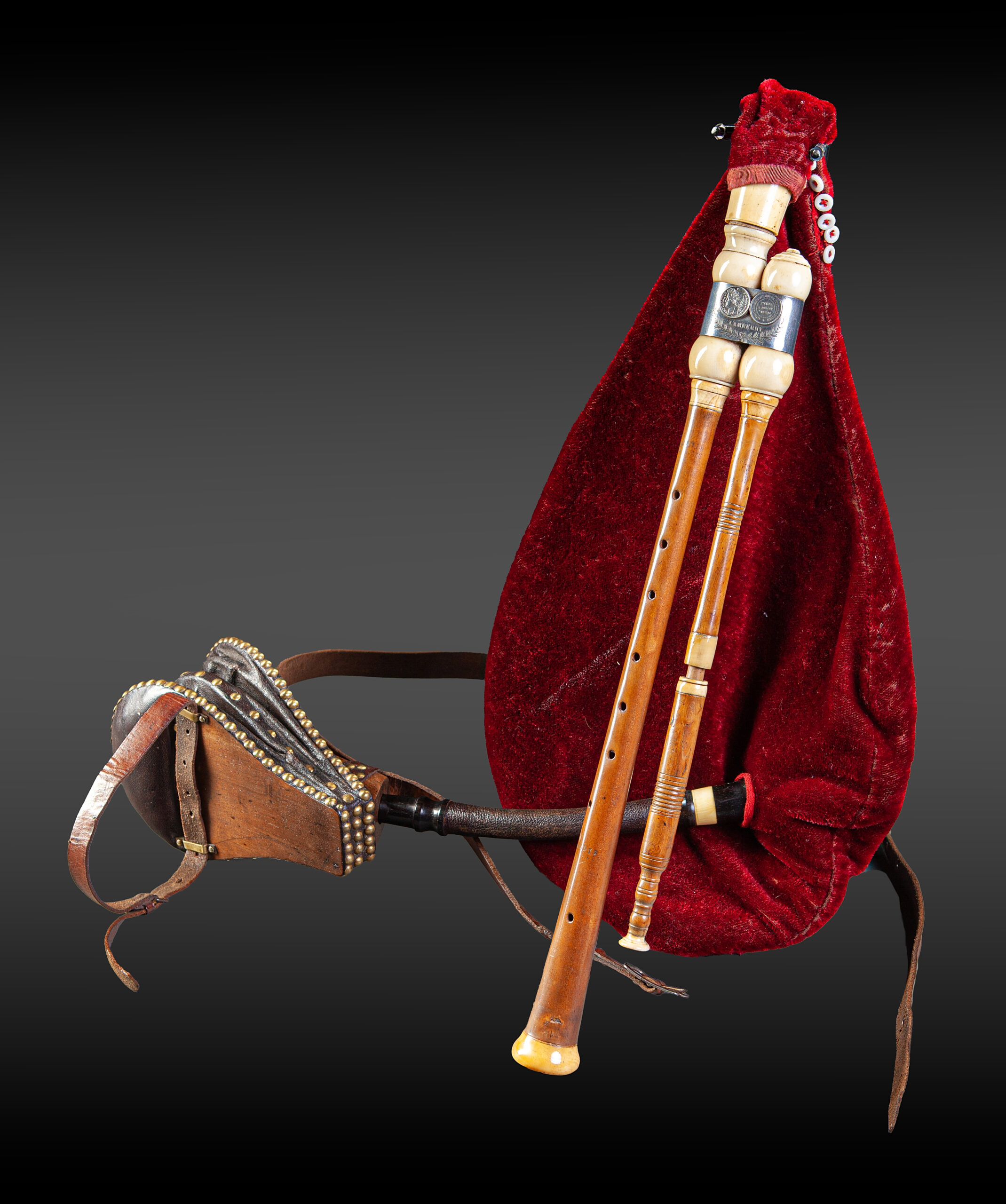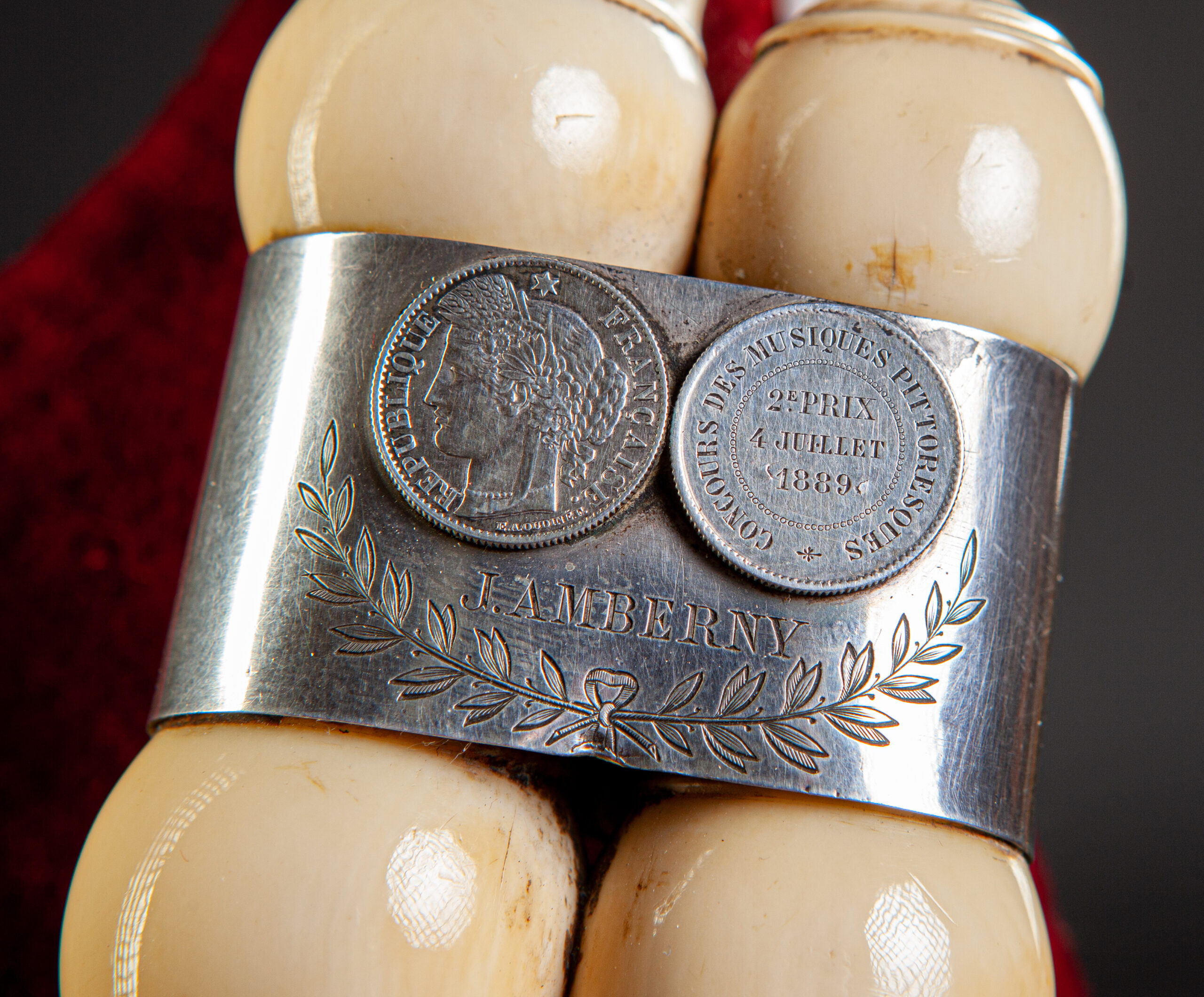CABRETTE
Benoit Amadieu (1804-1877)
The “cabrette” is the bagpipe used by Auvergne musicians who emigrated to Paris in the 19th century. It comes from the Parisian musette whose proportions have been modified to increase its sound power and make people dance in what then becomes the “bal musette”.
Benoit Amadieu is considered the most famous maker of his time. He is the one who adapted the instrument to the use and needs of bal-musette musicians. Recent work has allowed us to understand a little better the life of this almost mythical maker, about whom we knew nothing until now. (1)
This is the only preserved bagpipe that took part in the Concours des Musiques Pittoresques during the Universal Exhibition of 1889 in Paris.
The first prize was won by Jean Chassagne from la Pérelle district in Montluçon (Allier). (the bagpipes and the medal have disappeared) The second prize was won by Jean Amberny, from Mur-de-Barrez (Aveyron). The obverse and reverse of the medal are presented on the instrument headstock.
(1) Bruce Becamel – Fabrice Lenormand – Agnès Unterberger : « Paris Cabrette ; Enquête sur les générations pionnières. » ed : société-des-lettres-sciences-et-arts de Haute Auvergne. 2013.

